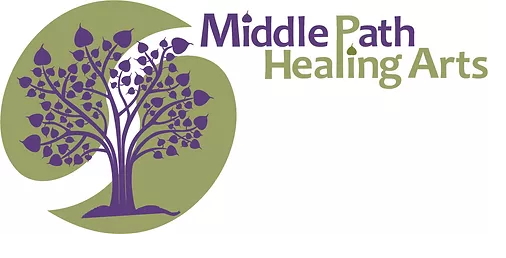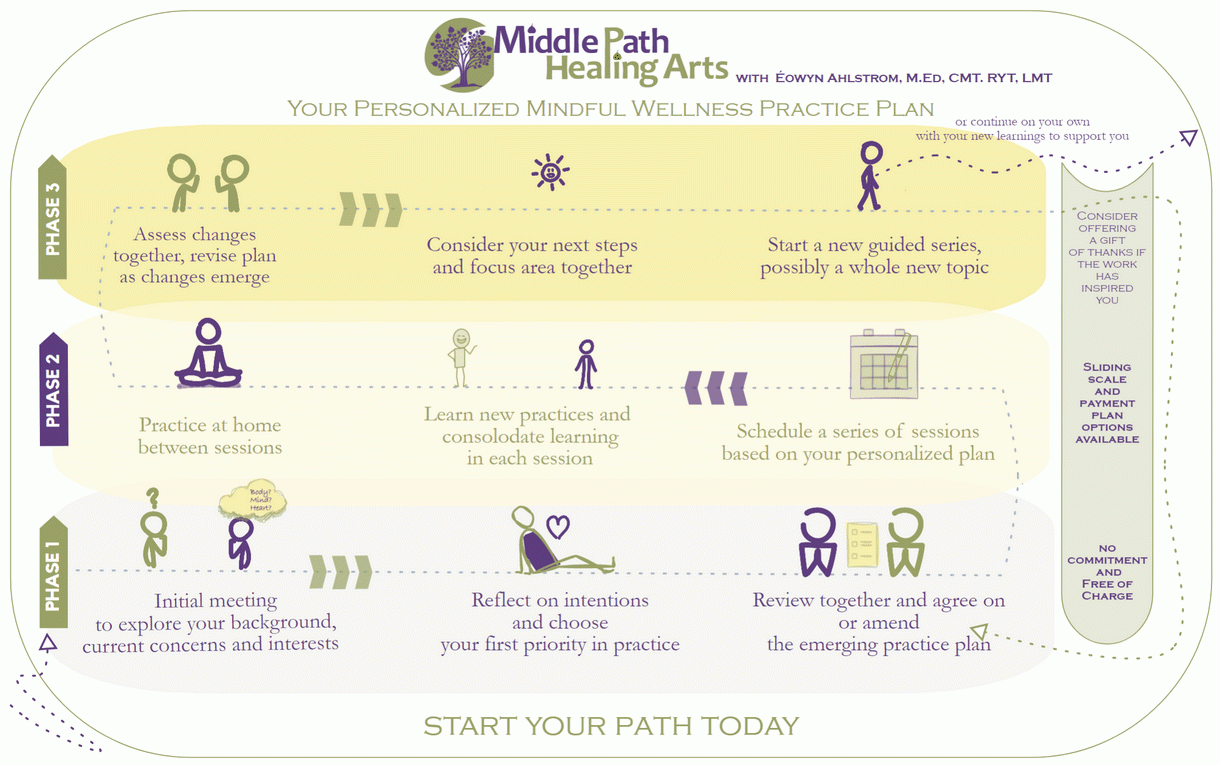A Challenge of Contemporary Times
The graphic above is a sketch of how I work with someone who asks me for private instruction. Recently such a person, who has been using apps only to practice both meditation and yoga, approached me. They were seeking clarification, wondering about context. What they were imbibing through the eclectic guided practices online felt easy to sample but not very deep. Many bright, earnest questions tumbled out:
- Are these New Age practices, Buddhist ones, or neither?
- What distinguishes yoga from meditation?
- Is it okay to just listen to guided online practices according to taste, or is there another more skillful way to navigate?
- How can one tell if they are practicing well?
Finally, with a furrowed brow, they wondered aloud, ‘is awakening even possible?’ And although they did not say so, I could hear ‘what’s the point?’ coming through in their tone of voice, and sense a subtle form of despair. Since practice has helped me so much, their discomfort inspired in my heart a wish to support them too…
I remember hearing a story, many years ago, of someone living in the early part of the 20th century who received just three sessions of instruction from a wise teacher. Because of limitations on communication and travel, they never saw that teacher, or met another, again. After that they practiced solo – with much ardor and dedication – and so became wise, compassionate, and free from stress. As such stories go, they then taught many others to do the same before dying peacefully of old age. Sounds wonderful.
Today, though, the pendulum has swung to the other side. The challenge now, ironically, involves too much access to disjointed and/or shallow guidance! It can be impossible to figure out what to listen to, and even harder to understand what to practice. So, practitioners can easily feel, especially after an initial ‘honeymoon phase’, like the path doesn’t go anywhere, or practice doesn’t really change anything. Well summarized by the author of The Paradox of Choice, Barry Schwartz, this challenge actually applies quite broadly to modern life:
The existence of multiple alternatives makes it easy for us to imagine alternatives that don’t exist—alternatives that combine the attractive features of the ones that do exist. And to the extent that we engage our imaginations in this way, we will be even less satisfied with the alternative we end up choosing. So… a greater variety of choices actually makes us feel worse.
This post is offered with the intention to provide some support and offer a way to approach this conundrum in a way that I have found helpful.
A Helpful Response
Fortunately, the middle path that the Buddha described some 2,600 years ago still provides a useful framework for navigating the new challenges we humans have created through technology and industry. So here is a video from scholar Bob Thurman that effectively summarizes the middle path:
The graphic at the start of the post was inspired by this middle way and depicts an approach that is:
- deeply grounded in past learning from great sages like the Buddha
- informed by contemporary contemplative science
- holistic in addressing body, heart and mind
- realistic, meeting you where you are and accepting present life circumstances as the path
- relational, in exchanging of experiences through mindful dialogue
- progresses, by choosing a place to start and a place to aim toward
- depends on commitment on the part of the learner and the teacher
- respects the learner as it supports them to develop the ability assess their own practice, at first with the help of the teacher
While apps can be a great place to start learning meditation and mindful living, it seems to me that the way to deepen practice depends on an approach like this. Perhaps the above list can help you assess your own practice and find your way.
And, if the Middle Path Healing Arts approach resonates with you, feel welcome to schedule a free consultation with me.

